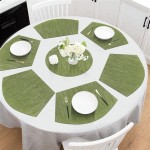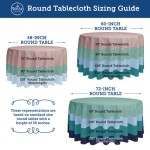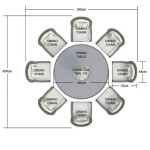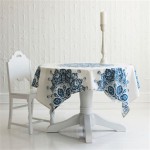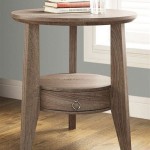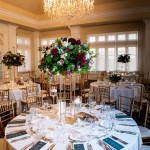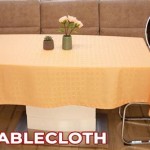Ideal Table Size for Round Diamonds: A Comprehensive Guide
The allure of a round diamond is undeniable, its brilliance and fire captivating generations. However, achieving that optimal sparkle requires careful consideration of various factors, one of the most crucial being table size. The table, the largest facet on the top of the diamond, plays a significant role in light performance. This article delves into the intricacies of table size, exploring its impact on a round diamond's brilliance, fire, and overall visual appeal. Understanding the ideal table size range is essential for anyone seeking to purchase a round diamond that maximizes its potential beauty.
The table percentage is calculated by dividing the diameter of the table facet by the average girdle diameter of the diamond and multiplying by 100. This percentage provides a quantifiable measure of the table's relative size. While there isn't one single "perfect" table size, a generally accepted range exists within which a round diamond is likely to exhibit exceptional brilliance and fire. Straying too far in either direction can negatively affect how light interacts with the diamond, leading to a less desirable appearance.
The Gemological Institute of America (GIA), a leading authority in diamond grading, provides guidelines for table size within its cut grading system. These guidelines, while helpful, are not absolute rules. They serve as a starting point for understanding how table size contributes to the overall quality of a round diamond's cut. Ultimately, the ideal table size is intertwined with other cut parameters, such as depth percentage, crown angle, and pavilion depth, creating a complex interplay of factors that determine a diamond's visual performance.
Impact of Table Size on Light Performance
The table facet acts as the primary entry and exit point for light within a diamond. When light enters through the table, it should ideally travel through the diamond, reflect off the pavilion facets (the facets on the bottom of the diamond), and exit back through the table to reach the observer's eye. This precise light path creates brilliance, the white light reflections that give a diamond its sparkle. Fire, the dispersion of light into spectral colors (like the colors of a rainbow), is also influenced by the table size. A well-proportioned table facilitates the optimal balance between brilliance and fire.
A table that is too large allows a significant amount of light to enter and exit directly through the table without undergoing the necessary internal reflections. This phenomenon, known as "table reflection," results in a diamond that appears less brilliant and fiery. The diamond might appear glassy or dull, lacking the characteristic sparkle that makes diamonds so appealing. Furthermore, a large table can make inclusions more noticeable, as the larger facet provides a less obstructed view into the diamond's interior.
Conversely, a table that is too small restricts the amount of light that can enter the diamond. This limitation can lead to light leakage, where light escapes through the sides or bottom of the diamond instead of reflecting back to the viewer. The result is a diamond that appears dark or lifeless, lacking both brilliance and fire. A small table can also diminish the diamond's perceived size, as less of the diamond's surface area is visible from the top.
Therefore, maintaining a balance is crucial. The ideal table size allows for sufficient light entry, encourages optimal internal reflections, and maximizes the amount of light that returns to the observer, resulting in a diamond with exceptional brilliance, fire, and scintillation (the flashes of light that occur as the diamond moves).
The Ideal Table Size Range: GIA Guidelines and Beyond
The GIA considers table percentages within the range of 54% to 60% as "Excellent" for round brilliant diamonds. This range is a general guideline, and diamonds with table percentages slightly outside this range can still exhibit excellent brilliance and fire. However, it's important to consider other factors, such as the diamond's depth percentage, crown angle, and pavilion depth, in conjunction with the table size.
Diamonds with table percentages slightly lower than 54% (e.g., 52% or 53%) can still be beautiful, especially if they have well-proportioned crown and pavilion angles. These diamonds might exhibit slightly more fire than those with larger tables. Similarly, diamonds with table percentages slightly higher than 60% (e.g., 61% or 62%) can still display excellent brilliance, provided that the other cut parameters are optimized. However, it's generally advisable to stay within the 54% to 60% range to minimize the risk of compromising the diamond's light performance.
It's important to note that the GIA's cut grading system is based on a statistical analysis of a large sample of diamonds. While the system provides valuable guidance, it's not a perfect predictor of a diamond's visual appearance. Ultimately, the best way to assess a diamond's brilliance and fire is to view it in person or through high-quality imaging, paying attention to how light interacts with the diamond.
Optimizing for Brilliance, Fire, and Scintillation
Achieving the optimal balance of brilliance, fire, and scintillation requires a holistic approach to diamond selection, considering not only the table size but also the other cut parameters. The depth percentage, which is the ratio of the diamond's height to its average girdle diameter, plays a crucial role in light performance. An ideal depth percentage typically falls within the range of 59% to 62.3%. A depth percentage that is too shallow can lead to light leakage, while a depth percentage that is too deep can cause light to be trapped within the diamond.
The crown angle and pavilion depth also significantly influence a diamond's light performance. The crown angle is the angle between the girdle plane and the crown facets, while the pavilion depth is the depth of the pavilion facets. An ideal crown angle typically falls within the range of 34° to 35°, and an ideal pavilion depth percentage typically falls within the range of 43% to 43.5%. Deviations from these ideal ranges can negatively affect the diamond's brilliance and fire.
Furthermore, the symmetry and polish of the diamond are important factors to consider. Excellent symmetry ensures that the facets are precisely aligned, allowing light to travel through the diamond in an optimal path. Excellent polish ensures that the facets are smooth and free of imperfections, maximizing the amount of light that is reflected. Diamonds with poor symmetry or polish may exhibit reduced brilliance and fire.
In conclusion, while the ideal table size for a round diamond generally falls within the 54% to 60% range, it's crucial to consider other cut parameters, such as depth percentage, crown angle, and pavilion depth, in conjunction with the table size. By taking a holistic approach to diamond selection and prioritizing excellent cut quality, it's possible to find a round diamond that exhibits exceptional brilliance, fire, and scintillation, maximizing its inherent beauty and value.

What Are The Ideal Proportions For Round Cut Diamonds Revealed

What Are The Perfect Diamond Proportions

The Significance Of Diamond Depth And Table Percentages

What Are The Perfect Diamond Proportions

Diamond Cut Chart Ajediam

Diamond Anatomy Explained

Understanding Diamond Table And Depth Cut Education

Guide Ideal Depth Table For Round Cut Diamonds

Diamond Table And Depth Percentage Steven Stone

Ideal Cut Round Brilliant Diamonds Ascot
Related Posts


